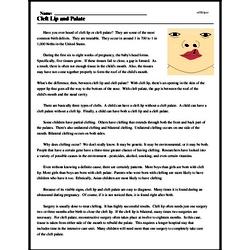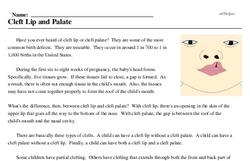Cleft Lip and Palate
Have you ever heard of cleft lip or cleft palate? They are some of the most common birth defects. They are treatable. They occur in around 1 in 700 to 1 in 1,000 births in the United States.
During the first six to eight weeks of pregnancy, the baby's head forms. Specifically, five tissues grow. If these tissues fail to close, a gap is formed. As a result, there is often not enough tissue in the child's mouth. Also, the tissues may have not come together properly to form the roof of the child's mouth.
What's the difference, then, between cleft lip and cleft palate? With cleft lip, there's an opening in the skin of the upper lip that goes all the way to the bottom of the nose. With cleft palate, the gap is between the roof of the child's mouth and the nasal cavity.
There are basically three types of clefts. A child can have a cleft lip without a cleft palate. A child can have a cleft palate without a cleft lip. Finally, a child can have both a cleft lip and a cleft palate.
Some children have partial clefting. Others have clefting that extends through both the front and back part of the palates. There's also unilateral clefting and bilateral clefting. Unilateral clefting occurs on one side of the mouth. Bilateral clefting occurs on both sides.




